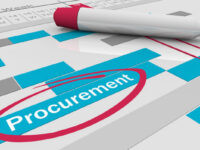For small businesses, an unexpectedly large debt can deal a fatal blow. This coming tax season, make sure you have enough to cover your tax bill or look to solutions such as debt consolidation through loan products that compare favourably to the ATO payment schemes.
Complications from the pandemic
Businesses file their tax every year, so why is this year likely to cause problems? Put simply: complications from the pandemic.
The government’s pandemic tax relief scheme allowed struggling businesses to hold onto the taxes that they owed, interest-free, to keep businesses alive. As the 2022/23 financial year draws to a close, those taxes now fall due. Businesses that obtained tax relief during the height of the pandemic are now due to repay up to three years of back taxes in one hit – possibly hundreds of thousands of dollars.
A taxing time for cashflow
After filing your business tax return, you’ll receive a Notice of Assessment telling you how much you have to pay, with six weeks to transfer the money to the ATO. Be ready with that amount as soon as it falls due or you’re up for a range of penalties including fines or legal challenges to your directorship.
The ATO does offer payment plans to eligible businesses that may be in financial trouble due to their tax obligations, giving you up to six months to pay the taxes owed. The catch? A general interest rate of up to 10.46 per cent per annum calculated daily.
So, if a business has a tax debt of $100,000, it has six weeks to pay it. If this is not possible, the tax department will allow repayments, for example over a five- or six-month period. For a small business, having to pay an extra $20,000 or so per month, including interest and on top of other tax commitments including BAS, has a significant effect on cashflow. Add the fact that the business cannot default on the payment plan and that can cause more stress.
The case for debt consolidation
Debt consolidation is the ability to include debts such as tax obligations in a loan product – a sensible prospect if this is at a lower interest rate than the ATO payment plan.
Some non-bank lenders and home loan providers, such as Rate Money, can cover the tax debt from equity in the business owner’s property and roll that into their mortgage, freeing up cashflow for the business. This is at a rate lower than the ATO and can be paid at home loan interest rates and terms at a pace set by the borrower, not the tax department, and can be factored into the business budget.
On a $100,000 loan, the interest-only repayment is $541 a month based on a 30-year loan term, but you have the flexibility to pay it off quicker which can provide up to $18,000 a month in cashflow for the business.
Not many financial institutions offer tax debt consolidations for businesses, and those that cash out on the business capital do it under the commercial division, which is at a higher rate, so it’s worth evaluating your options.
As always, seek professional help to see if a loan product is right for you. Consult with an accountant or financial advisor on the best ways to prepare for tax debt. Ask:
- Are there any new tax rulings coming in that will affect my business?
- Should I be making purchases now with an automatic tax write-off?
- Do I need to restructure my business from a sole trader to a company for tax reasons? Or, if already a company, should I look at setting up a trust?
- Should I set up a self-managed super fund?












